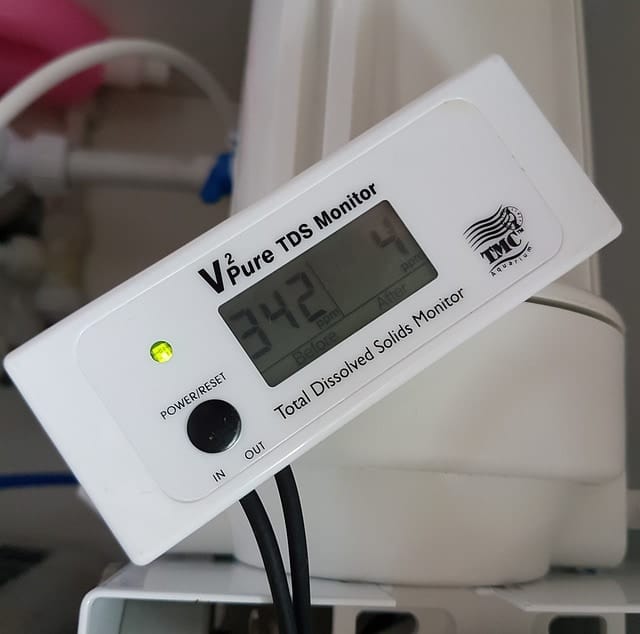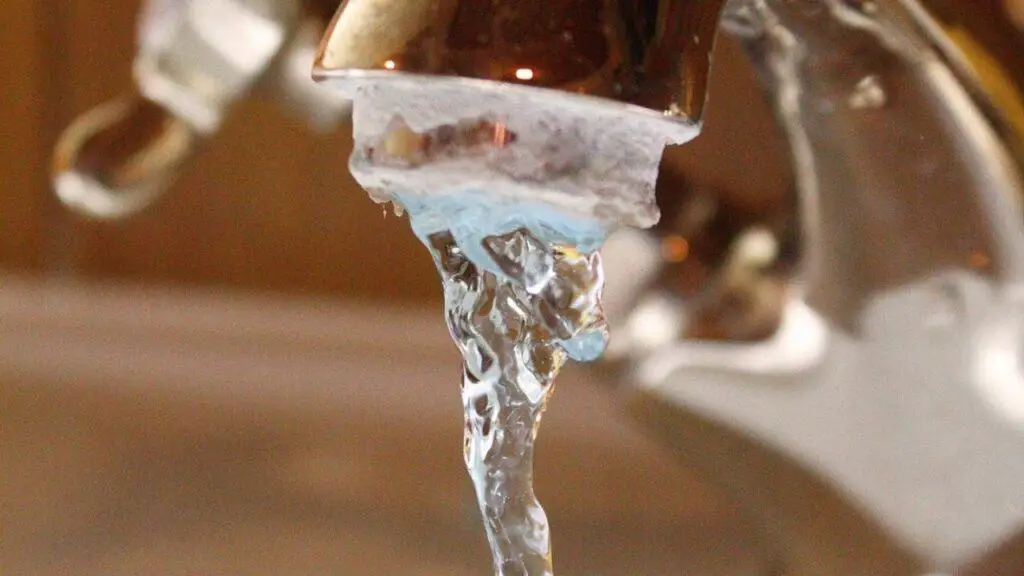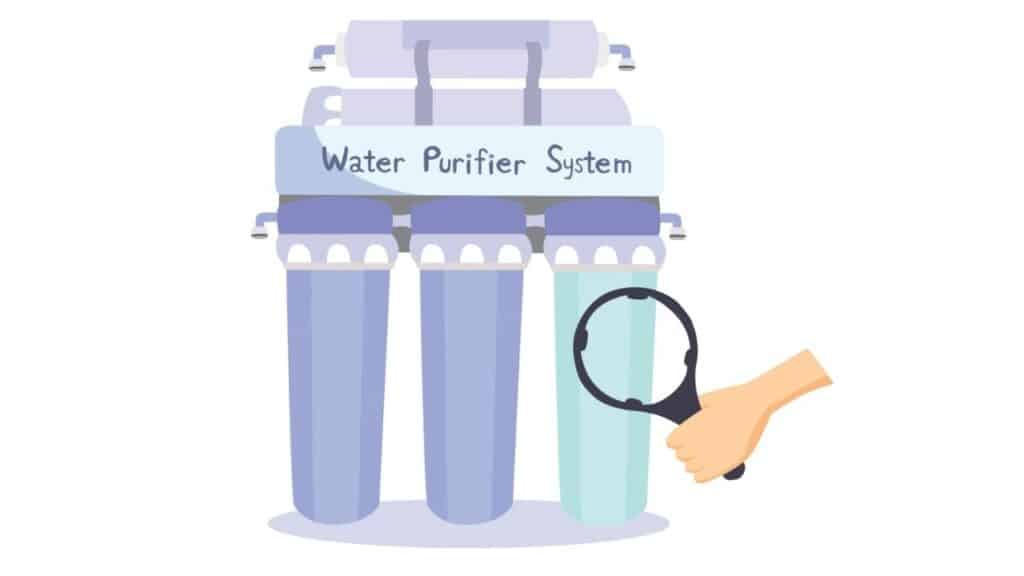
TDS meters are small, handheld devices and are a good choice for:
- checking for changes in water quality over time;
- confirming the reason that your water supply tastes bad;
- knowing when your drinking water filter needs replacing;
- or checking water in an aquarium.
A TDS meter doesn’t measure overall water quality. It also can’t identify specific minerals or contaminants.
I spent several hours researching and testing the meter that I ordered online. And in the rest of this article I’ll show you exactly how, why, and when you should consider using one for water analysis.
First up, I’ll explain what TDS or total dissolved solids actually means. If you already know, feel free to skip to one of the following sections.
- What does TDS mean?
- What are TDS meters?
- What are TDS meters used for?
- How can you lower TDS?
- Next steps
What Does ‘Total Dissolved Solids’ (TDS) in Tap Water Mean?
Total Dissolved Solids is the measurement of the combined organic and inorganic substances found in a water sample. This includes any particles which aren’t pure H2O water molecules. (Corrosionpedia)
TDS is measured in parts per million (ppm). So this number is telling you the number of particles per one million particles of the solution.
For drinking water, these particles are usually minerals, salts, and other organic matter. Total dissolved solids can include:
- Calcium
- Magnesium
- Potassium
- Chlorides
- Sulphates
- Bicarbonates
A total dissolved solids measurement only tells you the total amount. It can’t break down the quantities of each substance individually.
If your tap water has been contaminated with motor oil, pesticides, chromium 6, heavy metals, or other dangerous content a TDS reading will not warn you of this.
In short, a TDS reading can not ensure that your water is safe for your health.

Does high TDS mean hard water?
Not necessarily.
TDS is correlated with hardness (ie. the harder your water the higher your TDS). Yet using a water softener, which increases salt content, may actually increase your TDS.
What Are TDS meters?
A TDS meter is a small, handheld tool that measures the ‘total dissolved solids’ or ‘tds levels’ in a solution.
They are small, battery-powered devices that give a parts per million (ppm) reading when submerged into a water sample.
TDS Meter Price
You can order a TDS meter easily and cheaply over the internet and it shouldn’t cost you more than a few dollars.
Other more advanced analysis devices are available. These can give you a TDS reading alongside other more advanced measurements.
How do TDS meters work?
Dissolved solids in water, like salts or minerals, increase the conductivity of a solution.
The meter makes a conductivity measurement by sending a tiny current of electricity through the sample and measuring the voltage. From this the meter is then able to estimate the TDS level.
What Are TDS Meters Used For?
TDS meters are an inexpensive way to keep track of your water quality, but keep in mind they don’t give the full picture. If you want a full analysis you should order a water testing kit.
- Checking for changes in water quality
Testing the TDS of your water doesn’t give you in-depth analysis of your water. But regular testing can identify any sudden changes in water quality that may need further investigation.
- Confirming bad water taste
If you think your drinking water tastes bad, a TDS test can confirm this. The WHO found that the best tasting drinking water had a TDS level of 50 – 300 ppm. Whereas water with a high concentration of TDS (over 900 ppm value) had a poor taste. (WHO)
- Checking water filter efficiency
For those using water filters at home, take a TDS measurement immediately after changing to a new filter. Check the water again at regular intervals. A high TDS may mean it’s time to change your filter.
- Monitoring aquarium water
The TDS value of an aquarium needs to be constant, and should be at different levels for specific kinds of fish (TheAquariumSolution). Again, a TDS meter won’t be able to identify the exact makeup for the water – but it’s a fast and cheap way to identify changes.

- Monitoring pool water
Proper pool maintenance requires constant monitoring of TDS levels.
As mentioned before, TDS should NOT be used to confirm that your water is safe.
How Can You Lower TDS?
- Water Filtration systems with a carbon filter can slightly lower your TDS. Most people concerned about water quality should have a filtration system regardless of their TDS score.
- Distillation is a process that removes minerals by boiling water. The vapor is then condensed back to liquid again. This may leave you with a slightly flat taste.
- Reverse Osmosis Systems can treat mineral water and remove most particles. One benefit of a reverse osmosis system is that they still leave a small amount of minerals which preserves the taste.
- Deionization is an ion-exchange process. In this process ions run through a resin bed and exchange hydrogen ions for hydroxide ions. This produces very high-purity water.

Next steps
Now you know what a TDS meter is, you may want to invest in a testing kit for further analysis.
Otherwise, if you’re ready to invest in filtration and treatment, then check our articles on the best water filters.
